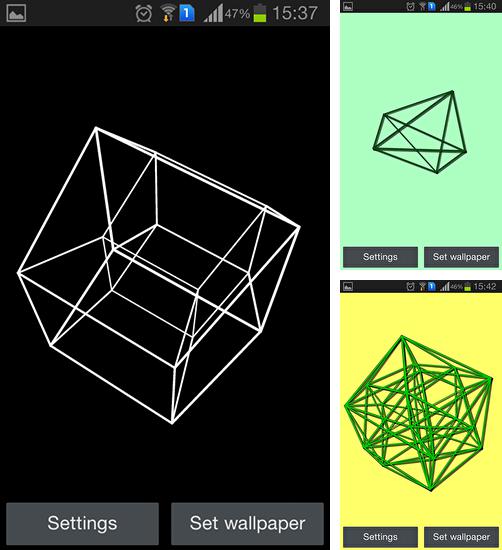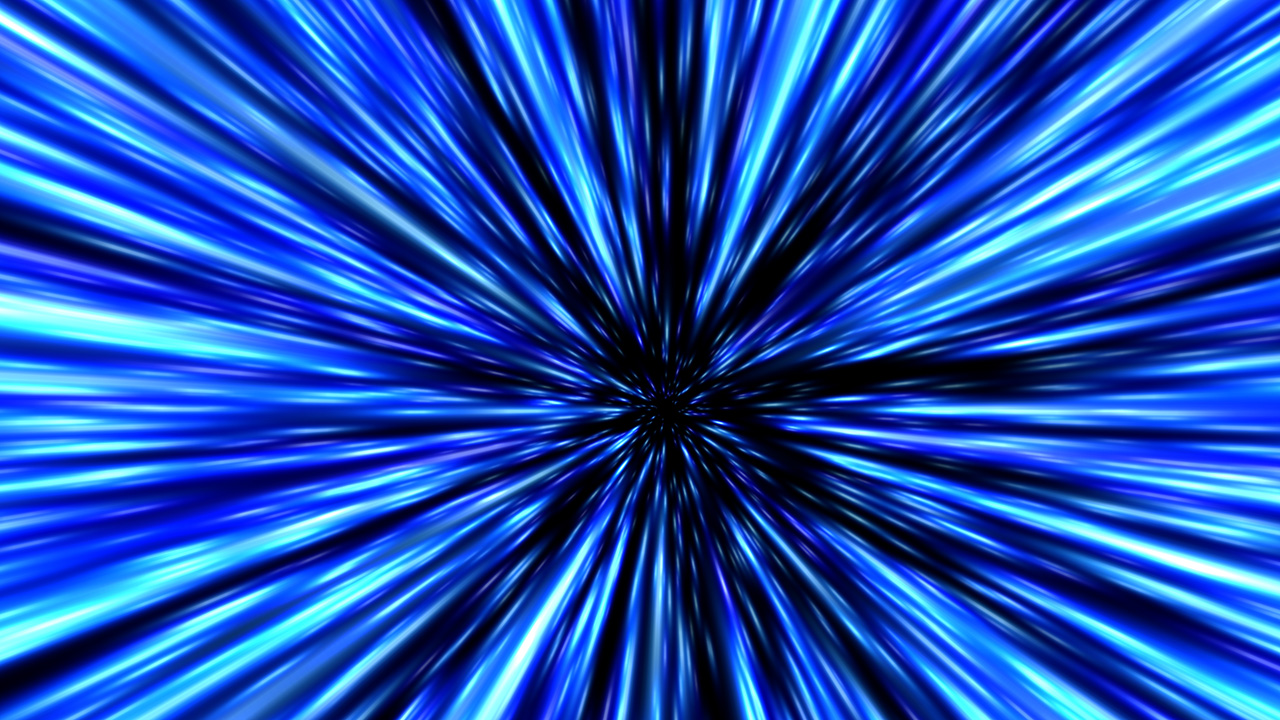Hypercube Screensaver
Screen Savers//Screen SaversAs a fun graphics hack in 1992 I put together a screen saver that does n-dimensional hypercubes. Originally for xscreensaver (and called multidico), I recently renamed it hyperer, enhanced it and ported it. Getting hypererHyperer, the current version for ( source code patches against Redhat’s xlockmore-4.05:, 22KB)Multidico, the version for xscreensaver very old–no color ( source code:, 11KB) What Does Hyperer Do?For an excellent on-line description of 4-dimensional hypercubes, see. I won’t try to describe higher-dimensional cubes other than to say ``generalize’’.By default, hyperer displays things with a nice rainbow pallet. For example, here’s a 5-dimensional cube:It can be difficult to visualize higher dimension hypercubes.
Color-groups mode (option: +color-groups) colors 3-d (regular) cubes inside the hypercubes, perhaps making it easier to see what’s going on. For example, here’s a 5-dimensional cube with color-groups:Of course, the really snazzy hyperer displays involve more dimensions. Here’s two shots of a 7-dimension hypercube, one looking more cube-like than the other.Sadly, hyperer currently has some amount of flicker when drawing. You’re welcome to look at the code and suggest alternatives, the usual solution (xoring) doesn’t work for reasons described there. For pseudo color displays the right thing to do is to draw into half the bitplanes and play colormap games to get page flipping, but that’s too much work for me and I have a true-color display.
Xjack Screensaver
The TesseractThe tesseract, or 4D cube, is perhaps the most well-known of all the 4Dobjects. It is known by many names, among which are the 4-hypercube,the 8-cell, the 4D measure polytope, and thetetracube. It is bounded by 8 cubes, 24 squares, 32 edges, and 16vertices. Its many names describe its different special properties. It hasbeen the subject of several stories, such as Robert A. Heinlein's AndHe Built a Crooked House. It has also been the subject of countless 4Dwireframe rotation programs, screensavers, and Java applets.The name “tesseract” comes from the Greek τέσσερειςἀκτίνες, meaning “four rays”, referring to the four mutuallyperpendicular directions on which it is based.
Hypercube Screensaver Free
ConstructionThere are several ways of constructing the tesseract. The simplest way is toextrude the along the W-axis. The following obliqueprojection of the tesseract underlines this method of constructing thetesseract.The red cube shows the starting 3D cube, and the blue cube shows theendpoint of the extrusion. The yellow faces trace out the path of theextrusion.


They actually form 6 other cubes, which are generated by theextrusion of each of the 6 faces of the original cube. So the tesseract infact consists of eight cubes. These 8 cubes form its outerboundary.
Hypercube Screensaver Wallpaper
Cell-first ProjectionsThe difficulty with the above image is that there are too many intersectingsurfaces, so it is difficult to discern the 8 constituent cubes. The followingdiagram tries to correct this defect by using a perspective projectioninstead:In this image, the blue “inner” cube is actually the same sizeas the red “outer” cube, but it appears to be smaller because it isfarther away along the W-axis. Between the inner and outer cubes are 6frustums that are actually the other 6 cells, as shown by thefollowing images:These 6 frustums are actually regular cubes; but they appear distorted intofrustums because they are seen at an angle. Furthermore, all 8 cubeslie on the outer boundary of the tesseract. Even though it appearsthat the inner cube is on the “inside” whereas the outer cube is onthe “outside”, they actually both lie on the outside ofthe tesseract, on two opposite sides. The following animation shows whathappens when we rotate the tesseract in the XW plane.The red and blue cells appear to be deforming inside-out and engulfing eachother, but this is only an artifact of projection into 3D.
In reality, they areperfectly regular cubes, two opposite cells of the tesseract, and neitherdeform nor touch each other as they rotate through 4D space. Hidden Surface RemovalOne thing that is often neglected to be mentioned when such wire diagrams ofthe tesseract are presented is the fact that they represent projections of thetesseract without the removal of hidden surfaces. This is like showingthe rotation of the wireframe of a 3D cube, where you can see through its facesand see what is on the other side of the cube. While this is useful in seeingthe entire structure of the tesseract, it sometimes gives too much detail andbecomes confusing. The following images try to complement the picture byshowing projections of the tesseract where obscured 4D surfaces are notshown.For example, when viewed from the angle that corresponds with thecube-within-a-cube image shown earlier, the tesseract in fact appears as asimple 3D cube:When rotated 45 degrees in the XW plane, the tesseract appears asfollows:Only two cells are visible because the rest are obscured behind them in the4th direction. Vertex-first projectionAnother fact that is often neglected when tesseract projection images anddiagrams are shown is that projections such as the cube-within-a-cube actuallyview the tesseract from a “flat” angle, akin to looking at a 3Dcube directly at one face, or perhaps at an edge, and seeing only two faces ata time. Just as we intuitively imagine the 3D cube from an angle such that wecan see three of its faces at a time, so a more intuitive angleof looking at the tesseract is from an angle where we can see four ofits cells at once.
The following image shows one such view of thetesseract.The 3D surface of this projection is called a rhombic dodecahedron.It is a 12-faceted polyhedron where each face is a rhombus. The nearest vertexto the 4D viewpoint is the one in the center of the projection,highlighted here in yellow. The four cells of the tesseract visible from thisangle are shown below:The other four cells of the tesseract are behind these four in the 4thdirection, so they are not visible here. Geometrical PropertiesThe tesseract belongs to the family of n-dimensionalhypercubes, also known as measure polytopes (because theyconstitute the unit by which n-dimensional space is measured). Itsdual is the. The coordinates of anorigin-centered tesseract with edge length 2 are all permutations of signand coordinates of:.
(1,1,1,1)Interestingly, not only is the 16-cell its dual, but also itsalternation. This property is peculiar to 4D; in 3D, the alternatedcube is the tetrahedron, and in 5D, the alternated cube is a semi-regularpolytope known as the demipenteract. This property is useful forderiving a coherent indexing of the, which allowsus to construct the using theas an intermediate.Last updated 17 Jun 2019.